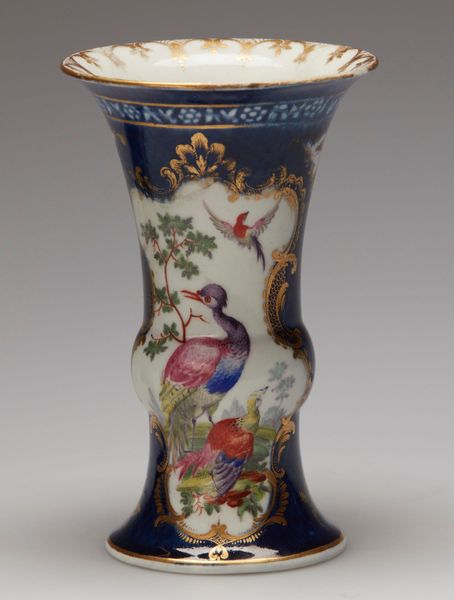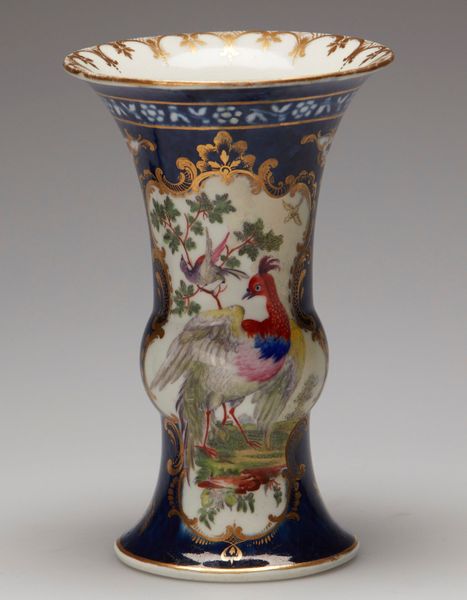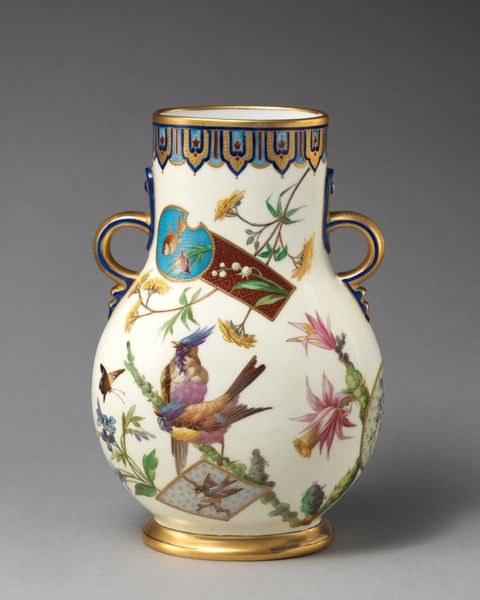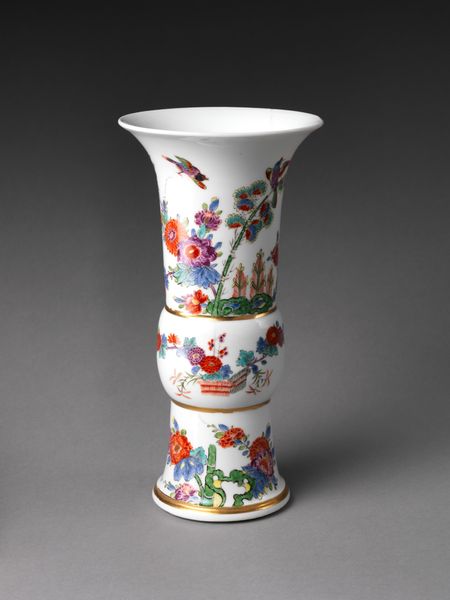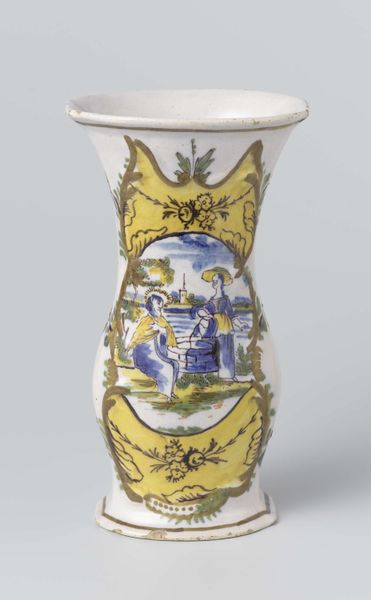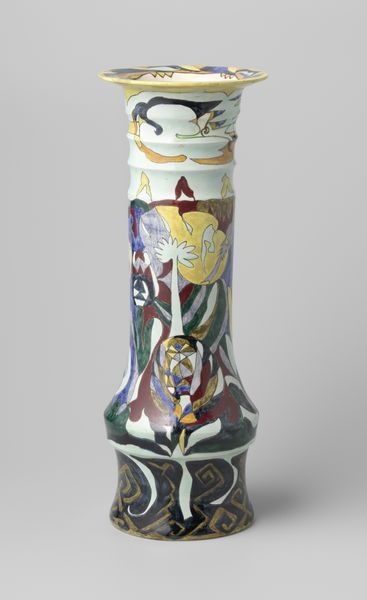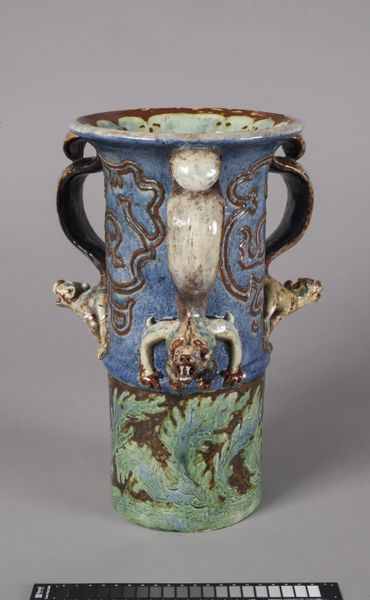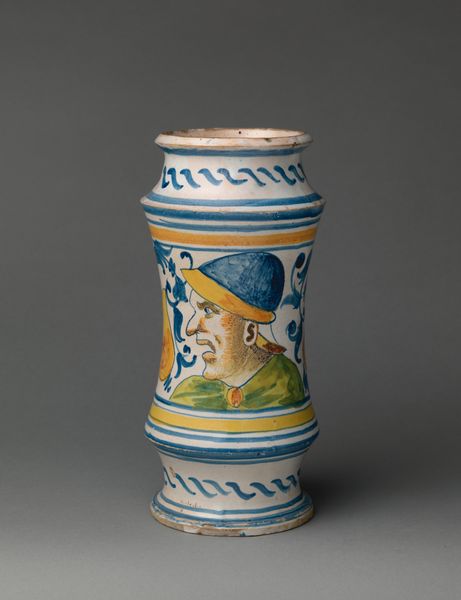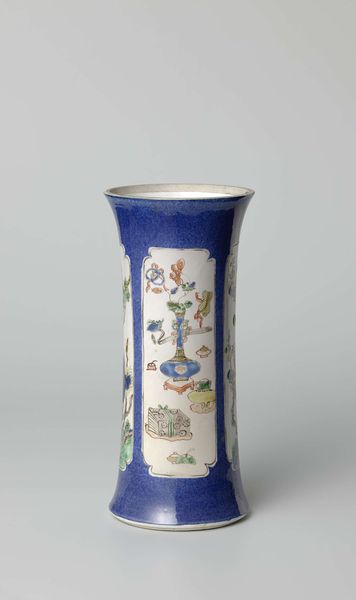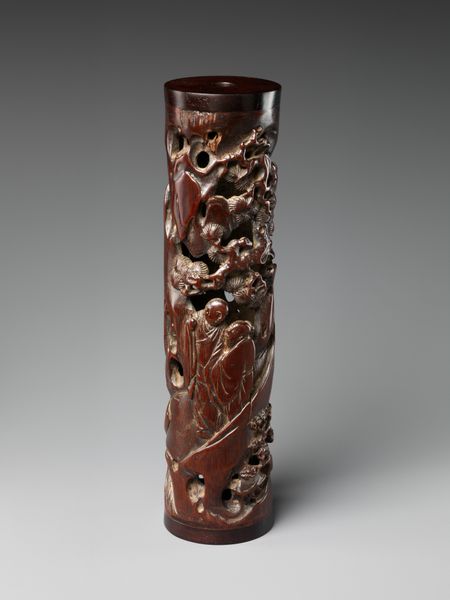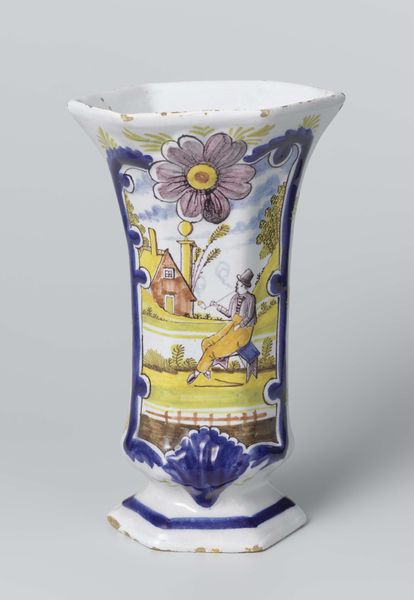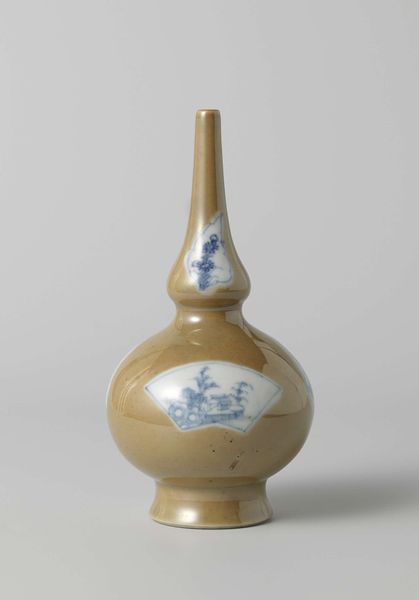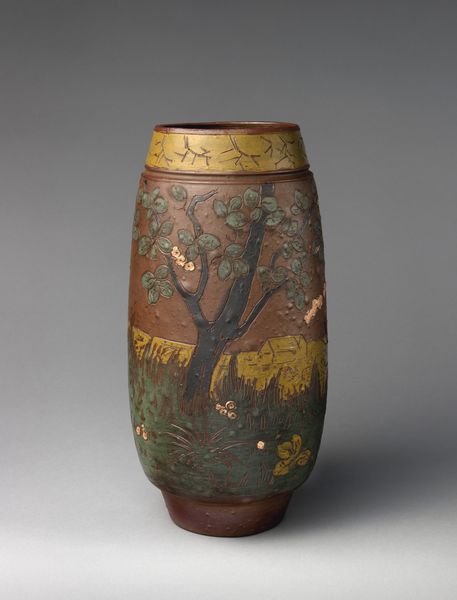
ceramic, porcelain, sculpture
#
ceramic
#
porcelain
#
figuration
#
sculpture
#
genre-painting
#
decorative-art
#
miniature
#
rococo
Dimensions: Height: 3 3/4 in. (9.5 cm)
Copyright: Public Domain
Editor: We’re looking at "Boy with Mandolin," a porcelain sculpture made between 1745 and 1760 by the Saint James’s Factory, currently residing in the Metropolitan Museum of Art. It feels incredibly delicate and precise, almost like a miniature painting brought to life. What elements stand out to you when you look at this sculpture? Curator: The immediate attraction lies in its intricate detailing and Rococo aesthetic. Note how the artist’s concern lies primarily in rendering complex surfaces. For instance, observe the posture of the boy in relation to the 'tree' he sits on, its function decorative, his position, simply put, in front of the object. Are we even considering the relationship with the small canine by the 'tree' base? Editor: I see what you mean, it's as though the components only meet tangentially and are posed almost rigidly together. What would you say about the colouring and modelling? Curator: Exactly! And, examine the colour choices: soft pastels, delicate floral patterns. Notice, for instance, how the soft pink of the roses above directly offsets the muted reds of his decorative elements of the clothing; all, importantly, placed to direct the viewer's attention centrally toward the sculpture. And observe the highly stylized depiction of the subject's form that adheres strictly to the aesthetic of artifice, with only minor attention paid to realistically scaled proportions or form of human likeness. Editor: So, you are pointing out that there are no formal attempts to render space beyond aesthetic consideration, a celebration of pure form? Curator: Precisely. Everything adheres to the aesthetic intention. The artist focuses on beauty and elegance over any attempt at realism, with no true regard for conventional modelling practices; an embodiment of Rococo sensibilities. Editor: It’s fascinating to see how analyzing the elements and their construction reveals so much about the artist's intentions. I'll never look at decorative art the same way! Curator: Indeed. By focusing on form and material, we are able to discover its rich history, artistic and otherwise.
Comments
No comments
Be the first to comment and join the conversation on the ultimate creative platform.
